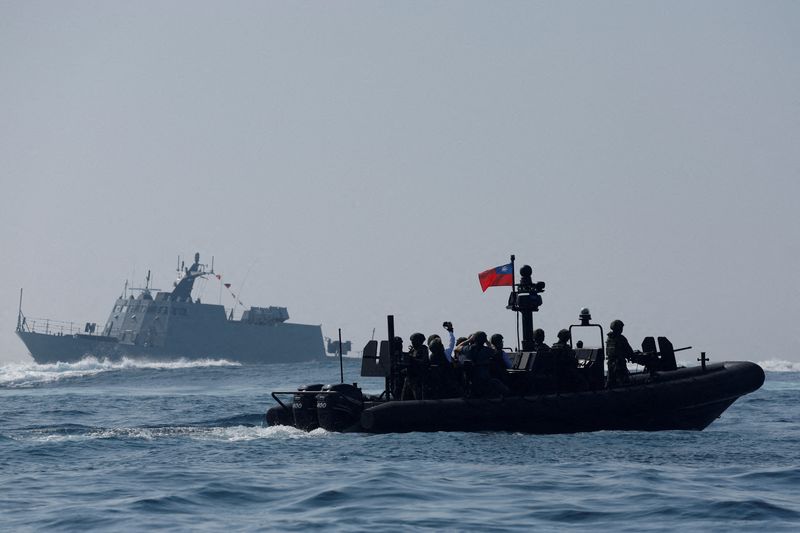Exclusive-U.S. and Taiwan navies quietly held Pacific drills in April, sources say
2024.05.13 21:42

TAIPEI (Reuters) – The U.S. and Taiwan navies conducted joint drills in the Pacific in April that, officially, did not take place, four people briefed on the matter said, as the two militaries boost cooperation amid rising Chinese military threats.
Washington and Taipei have been expanding their military cooperation in recent years amid almost daily Chinese incursions into Taiwan’s air defence identification zone and drills by Chinese forces near the island.
U.S.-Taiwan military engagement, including visits and training, are kept low-key and are often not officially confirmed because of China’s objection to any military contacts between Washington and Taipei. China claims democratically governed Taiwan as its own territory, which the island strongly rejects.
The drills, which were not publicised, took place last month in the Western Pacific, according to the sources, who requested anonymity given the sensitivity of the matter.
One source said “multiple military assets” were involved. A second source said the drills did not officially exist and were dubbed “unplanned sea encounters”, pointing to a tacit agreement in which both sides claim the exercises were simply the result of coincidental encounters.
“It’s like I am dining in this restaurant and you also happen to be here,” the source said. “Then it looks like I am only sharing the same table with someone.”
That source also said about half a dozen navy ships from both sides, including frigates and supply and support vessels, participated in the days-long exercises, which were designed to practice “basic” operations such as communications, refuelling and resupply.
3rd party Ad. Not an offer or recommendation by Investing.com. See disclosure here or
remove ads
.
Taiwan’s navy said in a statement to Reuters that to handle unexpected scenarios at sea and to minimise “interference” with each another, the navy “acts in concert with the U.S.-promoted Code for Unplanned Encounters at Sea”, also known as CUES.
“The Navy often makes contact with vessels of other countries and conducts encounter drills as needed,” the statement said, without elaborating.
The Pentagon declined to comment.
Taiwan and the United States have no official diplomatic relationship, as Washington formally recognises Beijing but is bound by law to provide Taiwan with the means to defend itself and is the island’s most important international backer.
A third source said although the “unplanned encounters” of the two navies involved mostly basic exercises, such drills are vital to ensure the two militaries can operate together in times of emergency.
CUES was formulated about a decade ago to help de-escalate tensions between militaries at sea, providing guidelines such as safe speeds and distances, a common communications language, and what actions to take if a ship becomes disabled.
Taiwan’s navy chief, Tang Hua, last month visited the United States and discussed how to boost bilateral naval cooperation, Reuters reported. In response, China’s foreign ministry said it firmly opposed “military collusion” between the United States and Taiwan.
This month, Taiwan’s Chief of the General Staff Admiral Mei Chia-shu attended the change-of-command ceremony for U.S. Indo-Pacific Command in Hawaii, which only came to light after he was spotted in the audience in an official picture.
China has long said Taiwan is China’s most sensitive territorial issue, which is a major bone of contention in Sino-U.S. ties.
3rd party Ad. Not an offer or recommendation by Investing.com. See disclosure here or
remove ads
.
Beijing has not renounced the use of force to bring Taiwan under its control, while Taipei says the Chinese territorial claims are void as the People’s Republic of China has never governed the island.








